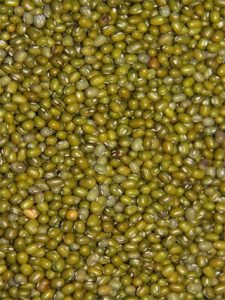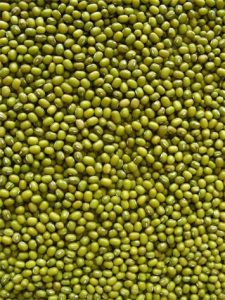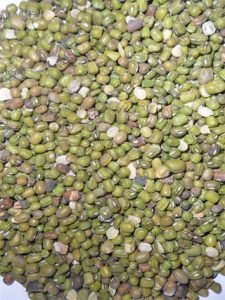Green Bean Color Sorting Machine Solution
Green Bean Color Sorter:
- The mung bean (Vigna radiata), alternatively known as the moong bean, green gram, Sanskrit मुद्ग / mudga, is a plant species in the legume family. The mung bean is mainly cultivated in India, China, and Southeast Asia. It is used as an ingredient in both savory and sweet dishes.
- Mung beans are commonly used in various cuisines across Asia.
Green Gram Dal (খোসা সহ এবং খোসা ছাড়া মুগ ডাল)
Whole beans and mung bean paste
Whole cooked mung beans are generally prepared from dried beans by boiling until they are soft. Mung beans are light yellow in colour when their skins are removed. Mung bean paste can be made by dehulling, cooking, and pulverizing the beans to a dry paste.Although whole mung beans are also occasionally used in Indian cuisine, beans without skins are more commonly used; but in Kerala, whole mung beans are commonly boiled to make a dry preparation often served with rice gruel (kanji). Dehulled mung beans can also be used in a similar fashion as whole beans for the purpose of making sweet soups. Mung beans in some regional cuisines of India are stripped of their outer coats to make mung dal. In Tamil Nadu, Telangana and Andhra Pradesh, steamed whole beans are seasoned with spices and fresh grated coconut in a preparation called sundal. In south and north Indian states, mung beans are also eaten as pancakes. They are soaked in water for six to 12 hours (the higher the temperature, the lesser soaking time). Then they are ground into fine paste along with ginger and salt. Then pancakes are made on a very hot griddle. These are usually eaten for breakfast. This provides high quality protein that is rare in most Indian regional cuisines. Pongal or kichdi is another recipe that is made with rice and mung beans without skin. In Kerala, it is commonly used to make the parippu preparation in the Travancore region (unlike Cochin and Malabar, where toor dal, tuvara parippu, is used). It is also used, with coconut milk and jaggery, to make a type of payasam.
In Chinese cuisine, whole mung beans are used to make a tángshuǐ, or dessert, otherwise literally translated, “sugar water”, called lǜdòu tángshuǐ, which is served either warm or chilled. In Indonesia, they are made into a popular dessert snack called es kacang hijau, which has the consistency of a porridge. The beans are cooked with sugar, coconut milk, and a little ginger.
In Hong Kong, dehulled mung beans and mung bean paste are made into ice cream or frozen ice pops. Mung bean paste is used as a common filling for Chinese mooncakes in East China and Taiwan. Also in China, the boiled and shelled beans are used as filling in glutinous rice dumplings eaten during the dragon boat festival (端午节). The beans may also be cooked until soft, blended into a liquid, sweetened, and served as a beverage, popular in many parts of China.
In the Philippines, ginisáng monggó (sautéed mung bean stew), also known as monggó guisado or balatong, is a savoury stew of whole mung beans with prawns or fish. It is traditionally served on Fridays of Lent, when the majority Roman Catholic Filipinos traditionally abstain from meat. Variants of ginisáng monggó may also be made with chicken or pork.
Mung bean paste is also a common filling of pastries known as hopia (or bakpia) popular in Indonesia, the Philippines and further afield in Guyana (where it is known as black eye cake) and originating from southern China.
Green bean Color Sorter is for choosing the better green bean , and remove the bad material. Metak color sorter can choose the good material according to the color.
Check the Examples of Color Sorter as below:
Recommend suitable Metak color sorter for Green Bean:
Name: Green Bean Color Sorter
Model: RCSK1 – RCSK7
Output: According to customer requirement.
Product Link: http://www.metakcolorsorter.com/peanut-sorting-machine-rcsk6-metak-color-sorting.html





